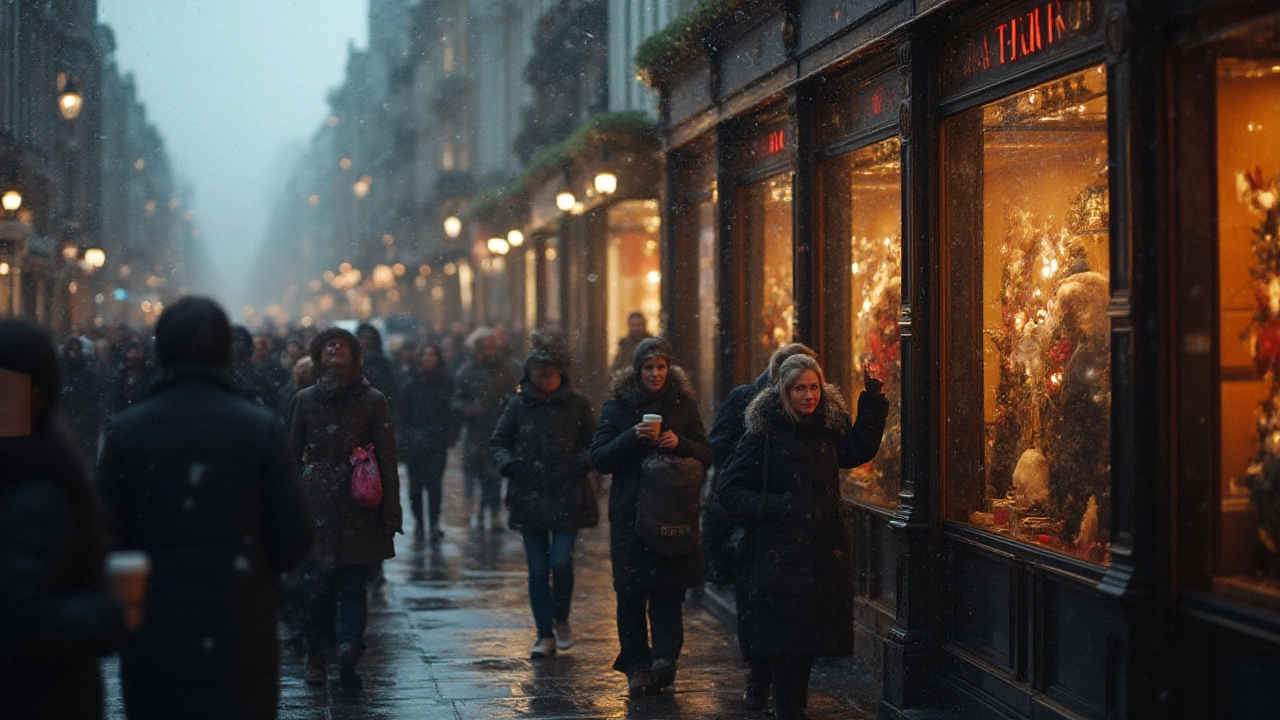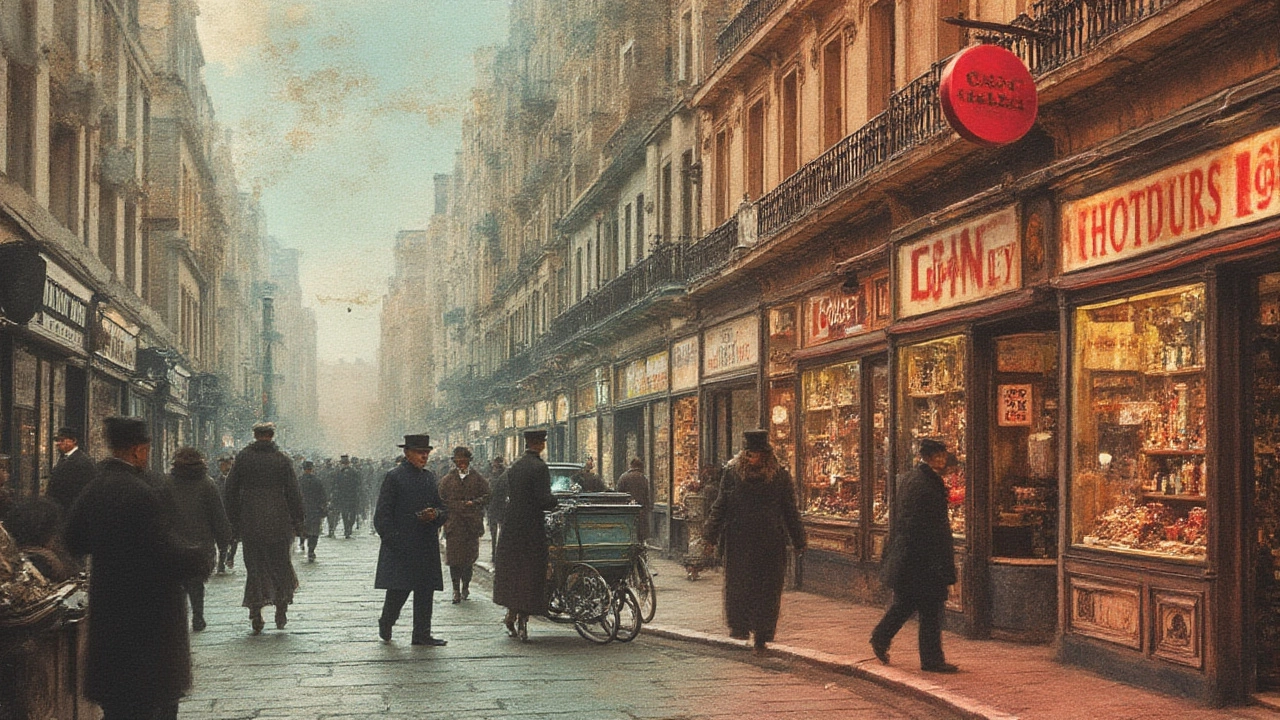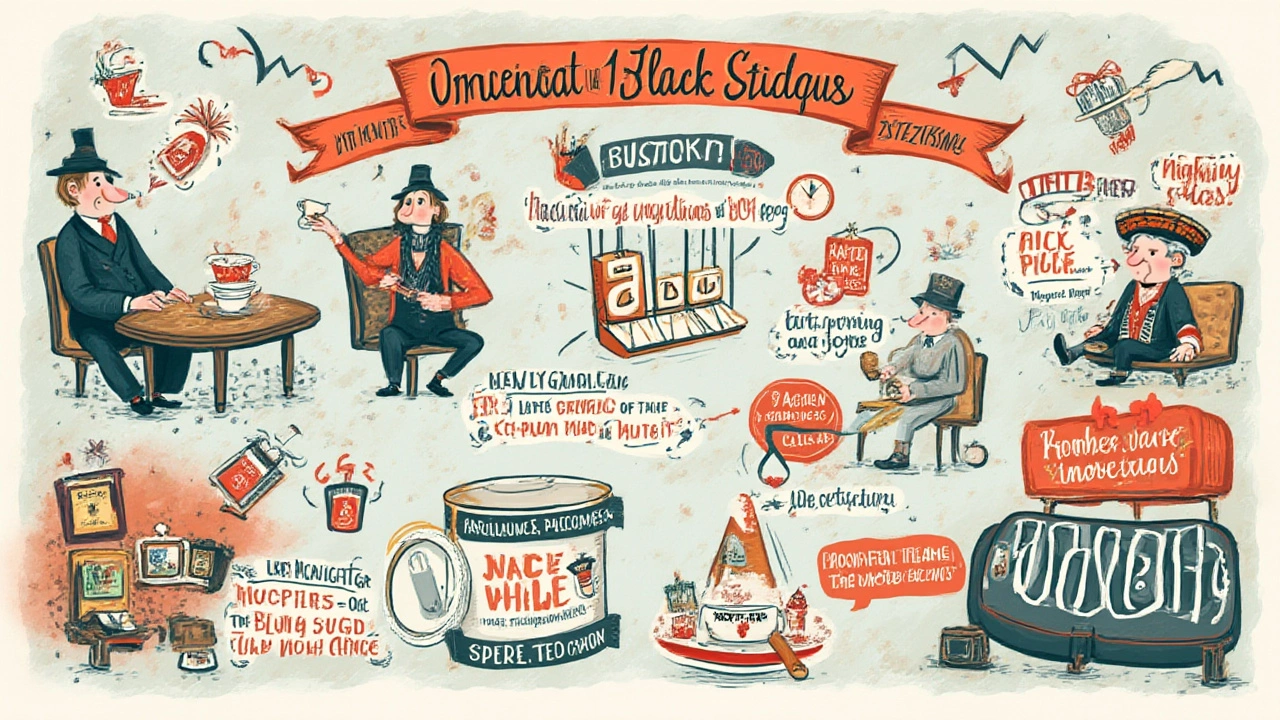Why is Black Friday Called That? The Surprising History Behind the Name
 Jul, 28 2025
Jul, 28 2025
The phrase “Black Friday” can instantly set your pulse racing—even if you don’t consider yourself a shopaholic. Imagine this: people camping outside stores, traffic jams for blocks, crazy doorbuster deals, and almost ritualistic chaos every November. You’d think the term “Black Friday” was cooked up by some clever marketing execs, right? Not even close. The origins are a wild mixture of accident, media panic, cash registers ringing, and a little bit of dark humour. Let’s get down to the nitty-gritty of what this name actually means, where it started, and how it totally reshaped our idea of holiday shopping.
The Real Story: From Financial Panic to Shopping Frenzy
Most people assume Black Friday was named for the day stores finally “go into the black”—meaning they become profitable after a year slogging through “the red”. While there’s a pinch of truth here, that version actually came later. The real first “Black Friday” had nothing to do with shopping. It was coined in 1869. On September 24th, two ruthless Wall Street moguls, Jay Gould and Jim Fisk, tried to corner the gold market. Their wild speculation backfired, causing a market crash and panic. Newspapers dubbed the day “Black Friday” because of the chaos and ruin it brought to investors. So the term originally meant economic disaster, not shopping euphoria.
The modern spark that turned Black Friday into a shopping beast didn’t happen until the 1950s in Philadelphia. Every year, the city would see a flood of people come in for the Army-Navy football game right after Thanksgiving. Police officers started using the term “Black Friday” because of the headaches: packed streets, impossible traffic, and shoplifters using crowds as cover. It was their least-favorite workday of the year. Store employees started using it too, grumbling about long shifts and out-of-control crowds.
Retailers hated the negative vibe, so they tried to rebrand it as “Big Friday”, hoping to clean up its image in the 1960s. Nice try—but “Black Friday” stuck, and by the 80s, businesses embraced it with a smile (and huge advertising budgets). That’s when that “from red to black” explanation entered popular culture. But it’s almost a coverup, a way for retailers to spin a story that sounds profitable and festive instead of messy or stressful.
If you’re looking for the single source that put “Black Friday” on the North American map, look no further than Philadelphia’s local newspapers from the ’50s and ’60s. One 1961 ad warned shoppers to expect “the annual Black Friday mess” in Center City. After that, the term spread westward: Chicago, Los Angeles, and then the rest of the continent caught the bug. Only by the 1980s did it become associated with profits rather than headaches and theft. As The New York Times described, “Retailers have tried to turn Black Friday into a day of joy…But it was the Philadelphia police who named it.”
It took more than good PR for Black Friday to become the holiday phenomenon we now know. To be honest, it’s a uniquely North American thing. The term barely existed outside the U.S. and Canada until the mid-2000s. Now you’ll spot Black Friday deals plastered across Paris, Berlin, and Sydney—not because they have Thanksgiving, but because who can resist deals on flat-screen TVs?
So the next time you see the words in a flyer or trending on Instagram, you’ll know it started with Wall Street mayhem, a city groaning under crowds, and clever rebranding. The “black” part? Not gloom—more like a storm of receipts and a tidal wave of retail cheer.

Black Friday Myths, Surprises, and How It Took Over the World
Here’s the thing: Black Friday’s reputation is as dramatic as a blockbuster movie. You’ve got legends, urban myths, and stuff people swear they remember, no matter how exaggerated. For instance, you might’ve heard it was named after the day slave traders supposedly offered discounts (don’t worry—historians have debunked this one as a complete fabrication). The real stories are just as wild, if not weirder—urban gridlock, police overtime, and retailers turning chaos into a cash cow.
For years, the retail industry assumed people only wanted bargains in-store—remember the stampedes for furby toys or tickle-me Elmo? Well, shoppers now chase deals online from their pajamas. By 2015, online sales on Black Friday hit record numbers, and in 2024, North Americans spent over $9 billion online in a single day. Cyber Monday now runs a close second, but Black Friday still rules the bargain kingdom. The best part? You don’t need to brave icy sidewalks or elbow through crowds to snag deals anymore.
Let’s put some numbers behind the legend. According to the National Retail Federation, more than 190 million Americans shopped during Thanksgiving weekend in 2023. That’s more than half the entire population. Canadians aren’t far behind, even though we have our own Thanksgiving in October. Thanks to the internet, Black Friday deals hit us hard, especially in big cities like Vancouver and Toronto. Small businesses join in too, not just mega-malls. Someone, somewhere, is always running a sale—everything from boutique coffee grinders to epic flight discounts. It’s the one day a year where your inbox is guaranteed to be overflowing at breakfast.
One thing you may not know: Black Friday isn’t the busiest shopping day for everyone. In Germany, for example, “Singles’ Day” (November 11—imported from China) is huge for deals. Mexico has “El Buen Fin,” where stores slash prices in mid-November. This just shows Black Friday isn’t a universal shopping holiday, but in North America, nothing else compares for scale. The term itself became a global export, purely because of how viral the deals and social media videos went in the 2010s.
Despite the chaos, most stores actually prefer when people shop. According to a 2017 study by Adobe Analytics, retailers see a 20-30% boost in sales over a typical November Friday. Many chain stores spend months stocking up and training staff for the event. As one Target executive told Time magazine, “Black Friday sets the tone for the rest of the season—everyone wants to be talked about, not missed.” Sharp discounts on TVs, toys, and gadgets are only part of the story. Retailers know that if they get you in the door (or on the website), you’ll probably buy other stuff at regular price, too.
Of course, there’s a dark side. Every year, someone gets so worked up over a deal that things get heated—there have been reports of fights, injuries, and at least twelve deaths since tracking began in 2006. Stores have tightened up security, offered better crowd control, and even spread deals out through online “Black Friday weeks” to reduce mayhem. In a sense, the modern Black Friday is tamer, with most people preferring online carts to overnight lines. Ironically, all the drama just fuels the hype for next time. Everyone has that one friend in their group who always brags about snagging a KitchenAid mixer at 60% off, right?
If you’re hunting for deals yourself, here’s a tip: Start tracking prices weeks before Black Friday kicks in. Sites like CamelCamelCamel or Honey let you see if the “deal” is really a bargain or just clever marketing. Also, look out for local sellers who use the chance to clear out inventory or offer unique bundled gifts. And never be afraid to set a budget—Black Friday FOMO is very real, but nobody needs three air fryers…no matter how cheap they get.
As one expert put it in The Atlantic,
“Black Friday has morphed from an afterthought into a spectacle—the ‘happiest retail day of the year’—and a kind of national sport for many.”If you’ve ever watched two strangers wrestling over the last Wi-Fi speaker, you know it’s not far off.

Why Black Friday Still Matters (and Isn’t Going Anywhere)
Love it or roll your eyes, you can’t avoid the ripple effects of Black Friday. For retailers, it’s become a make-or-break moment. Early reports for 2024 showed that Black Friday weekend accounted for nearly 20% of some stores’ annual profits—no joke. But even if you aren’t into wild shopping sprees, Black Friday changed the way we think about the holiday season. It launched a months-long stretch of deal-chasing: flash sales, pop-up promotions, and price-matching from nearly every shop you can name.
The psychological impact is real. Ever notice how people seem to start decorating, baking, and prepping gifts earlier every year? That’s the Black Friday effect. Retailers use the buzz to jump-start holiday cheer, turning one weekend into a whole season of anticipation. In a way, Black Friday redefined when “the holidays” truly start—right after Thanksgiving, not in mid-December. The scramble for the best gadget or toy acts like a milestone, signaling it’s time to deck the halls, even if you’re just here for the deals.
Another overlooked fact: the deals themselves aren’t always what they seem. According to the CBC, almost 50% of so-called “doorbusters” show up at the same price (or lower) during other times of the year, especially Boxing Day or back-to-school sales. The magic is in the marketing. Still, if you research and plan a bit, catching a Black Friday special can feel like winning the lottery. Even major airlines and hotels offer flash sales now, so it’s not just for TVs and toys.
The day also inspires weird traditions. Some families wear matching shirts or bring survival kits (coffee, granola bars, and backup chargers—don’t laugh, they help). Social media is full of “haul” videos, people filming their best finds or the craziest store lines. TikTok trends even include “Black Friday workout” routines to prep for the stampede. In short, it’s not just about buying stuff—it’s about the excitement, the rituals, and the kickoff of festive madness.
Black Friday isn't just a U.S. thing anymore. Even in places where Thanksgiving isn’t celebrated, you’ll find sales and crowded shops. In Canada, the term really took off around 2010, when border-hopping to U.S. malls became less practical and local businesses began offering equally irresistible deals. Across Europe and Australia, international brands like Amazon imported the tradition, turning it into a sales event that locals eagerly anticipate. Social media pushed it global, and now Black Friday hashtags trend in dozens of languages—a modern version of retail FOMO.
So, why does Black Friday still matter? Besides the sales (which can be awesome if you’re patient and picky), it’s the day everyone lets their guard down and jumps feet-first into the spirit of the season. Whether you line up before dawn or fill your cart from bed, the hype unites people in a weird, collective adventure. Think of it as a holiday in itself: not about giving, but about chasing a bargain or snagging something that makes you smile. Part history, part spectacle, part traffic jam, and all thrill—Black Friday’s messy beginnings just make it more fun to talk about each year.
If anyone tells you it’s all about money, remember the rest of the story: The term started off dark and gritty but ended up making November feel just a little brighter. Whether you’re out hunting for deals or lounging with leftover pie, you’ve got a front-row seat to one of the wildest traditions out there.
